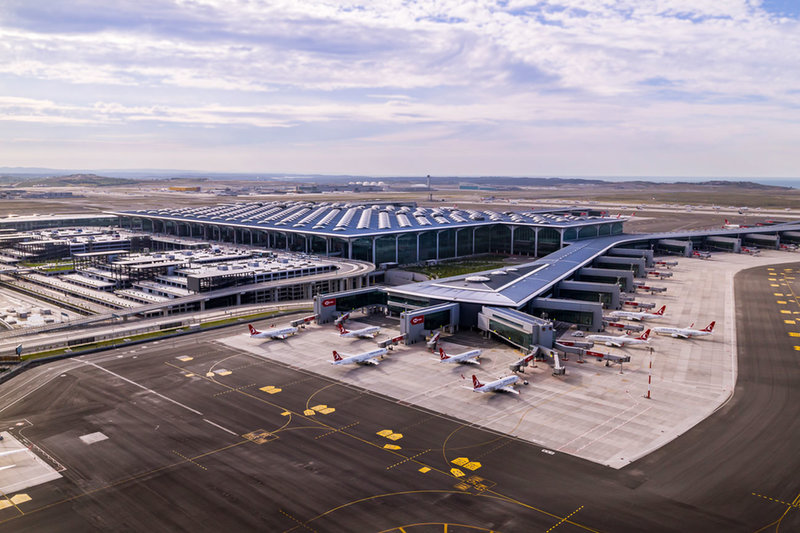Covid-19
Alleviating lengthy lines: Helsinki Airport’s new queuing system
Until recently, passengers visiting Helsinki Airport have been required to provide valid Covid-19 vaccination documents upon departure, arrival, and check-in. However, these guidelines have now changed, with the airport carrying out ‘random’ checks of these documents and forming a ‘green line’ for vaccinated travellers. Frankie Youd explores this decision.
Image: copyright
Airports across the globe have set out their own Covid-19 protocols for when it comes to travelling, ranging from proof of a negative Covid-19 test, documents showing vaccination status, and double vaccine travel passports.
As expected, this extra layer of security checking has resulted in many airports struggling with long lines of passengers, which not only adds delays to passenger processing times but also increases the number of disgruntled passengers.
In order to combat the issue of increased waiting times and long lines, Helsinki Airport has implemented an update to its Covid-19 security measures: a fast-track line for double vaccinated passengers. Surprisingly, within the new line passenger documents will not necessarily be checked due to the airport stating that checks will be carried out at random.
The creation of this new line aims to expedite the processing of travellers who have been fully vaccinated against Covid-19, which will not only speed up the passenger processing times but also alleviate the large passenger lines the airport was facing.
Welcome to ‘the green line’
If you are a double vaccinated traveller and arrive at Helsinki Airport with your Covid-19 certificates, you will be invited to join ‘the green line’. This line will speed up your passenger processing and will allow you to avoid the long lines of passengers who have not yet been double jabbed.
The most intriguing part of the new process has surprised many: passengers' vaccination documents will not necessarily be checked, with the airport stating that checks will be carried out ‘randomly’. However, the airport has stated that passengers who attempt to join the line without the correct documentation will be subjected to a fine if caught by authorities. Acting as a Custom authorities ‘nothing to declare’ line, the line is based on the trust and honour of the system in place.
Double-vaccinated individuals make up nearly 90% of the local population, and the line has been designed with Finnish citizens in mind, with hopes that it will dramatically speed up the passenger processing stage.
Speaking on this decision to the Finnish national broadcaster Yle, the Mayor of Vantaa (the municipality where Helsinki airport is located), Ritva Viljanen, said: “The change was necessary to alleviate chaos at the airport. Now there will no longer be huge queuing situations.”

Credit:
Keeping the restrictions in place: the disagreement
Prior to the airport’s decision to create this new express line, Viljanen expressed her dissatisfaction with the Finnish Government’s decision to extend Covid-19 related border restrictions until the end of this year.
The government stated that current entry restrictions – which see passengers either requiring a full course of Covid-19 vaccine, Covid-19 testing or adhering to the Communicable Diseases Act – will be kept in place in order to ensure the health and safety of passengers.
The government stated that all Covid-19 related border controls will be kept in place as long as 80% of Finland’s population is fully vaccinated against the virus. Viljanen commented on the announcement to Yle: "There are insufficient facilities for Covid inspections at the airport. The airport doesn't have facilities and there will be complete chaos.”
The airport doesn't have facilities and there will be complete chaos.
With August this year seeing the airport process over 67,000 passengers (sourced from Statista) and these numbers expected to double by the end of the year, Viljanen stressed that the airport is already struggling with congestion due to document inspections and that as numbers increase there is a risk of “chaos” at the airport.
Helsinki airport hopes that the creation of this line will ensure a quick passenger processing experience for passengers travelling through the airport.
The government’s decision was also criticised by many inhabitants of Finland. Those in the tourism industry also voiced their concerns surrounding the decision, with many feeling that due to vaccination coverage in the country being high, entry restrictions and border control levels should be changed.
The struggle of Finavia
Similarly to Helsinki Airport, Finnish airport operator Finavia recently stated that comprehensive screening of passengers would soon become impossible as passenger numbers continue to increase.
The company also notes that in other European locations, the checking and verification of Covid-19 documents is the responsibility of the travel operator, with certificates no longer being regular checked at border control.
Speaking on this issue, a Finavia statement reads: "The certificates of passengers arriving at the airport have, for the most part, already been checked once by the travel operators, and, in any case, the majority already have full vaccination protection.”
Finland’s current border policy deviates from other practises from across Europe – with Finland’s current Covid-19 risk assessments stricter than what is currently recommended by the EU.
At present, Finnish health authorities are required to interview each and every passenger who arrives to examine their health documents. Helsinki Airport and Finavia have stated that an EU-wide Covid-19 border policy should be put in place to alleviate the chaos this can cause.
Commenting on the rigorous checks to Yle, Viljanen said: "If a person is arriving from a country with a particularly high risk, then of course targeted checks would be made, but otherwise spot checks are adequate.”
With the current ‘green line’ system in place at the airport and passenger numbers predicted to increase it is hoped that the system will alleviate the “chaos” and stress which the airport and airport companies such as Finavia have been facing.
Main image: